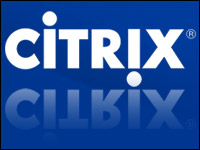
In a blog post Thursday, Mozilla Labs announced it has begun an endeavor with the ultimate goal of creating an environment for PC users in which Web applications function on the desktop the same way and with the same ease of use as desktop applications.
The first application to come from the project is Prism, formerly known as “Webrunner,” software that will allow users to run Web apps directly from the desktop — no browser needed.
“Mozilla Labs is launching a series of experiments to bridge the divide in the user experience between Web applications and desktop apps, and to explore new usability models as the line between traditional desktop and new Web applications continues to blur,” the open source software developer said.
Look Ma, No Browser
With the increasing popularity of Web-based applications such as Google Docs and Spreadsheets and Hotmail, and as users move away from the traditional desktop applications with which they are familiar, personal computing has entered a period of transition, according to Mozilla.
As software makers attempt to adjust to the change, the problem for users is that Web-based applications “often fit awkwardly into the document-centric interface of Web browsers,” the company said. Even worse, they are surrounded by a bevy of controls including “back and forward buttons and a location bar” that serve no purpose in terms of the operation of the application itself.
The company’s goal, though, is not to build a “proprietary platform to replace the Web.”
“We think the Web is a powerful and open platform for this sort of innovation, so our goal is to identify and facilitate the development of enhancements that bring the advantages of desktop apps to the Web platform,” Mozilla Labs stated.
Prism, Mozilla claims, will achieve this goal and allow users to “split Web applications out of their browser and run them directly on their desktop.”
A Rainbow of Possibilities
With Prism, PC users will be able to add their favorite Web applications to their desktop, so that when a user clicks on an icon, the Web app will run in its own window. The Web applications are accessible with Control Tab, Command Tab and Expose key functions, just like any other desktop application. Users can also continue to access the applications from any Web browser when they are away from the computer.
“Prism isn’t a new platform,” Mozilla stated. “It’s simply the Web platform integrated into the desktop experience.”
That means Web developers will not have to write code specifically for their applications to function with Prism. Any application that runs in a “modern standards-compliant Web browser” will run in Prism, Mozilla Labs said. Built on Firefox, it supports HTML (Hypertext Markup Language), JavaScript, CSS (Cascading Style Sheets) and Canvas, as well as other rich Internet technologies. A Windows version is currently being tested; early editions for the Mac and Linux are in the pipeline.
Prism is not the first of its kind; rather, it is the open source sister to Adobe Integrated Runtime (AIR), an application that converts Web-based technologies into desktop applications.
Is It the Web or Is It PC?
“This is really interesting stuff,” Dan Olds, principal analyst at Gabriel Consulting Group, told LinuxInsider. “I see this as a step along towards bringing the ubiquitous Web and the ubiquitous thin client together in the future.”
Prism offers the ability to have applications that belong to the user without having to download code and do a time-consuming installation, he said.
“The applications that emerge are not going to be huge complicated suites, but will be targeted for specific needs, quick and easy to own and have, and easy to use,” Olds noted.
Developing these types of applications is possible, but not within the mindset of the traditional software developers such as Microsoft, he explained.
“You couldn’t do this with Microsoft Office, Word or Excel,” Olds continued, “but you could do it with a light version of Office, Word or Excel. But that is not what Microsoft sells.”
With Microsoft moving toward Web-based applications, light versions of its software are possible. However, it is not a direction Microsoft would likely choose, he said, because it removes the company’s control mechanisms and would disrupt its two- to four-year upgrade cycle that has users moving to ever more-complicated and feature-packed applications.
“This could totally upset their traditional business model,” Olds stated.




















































